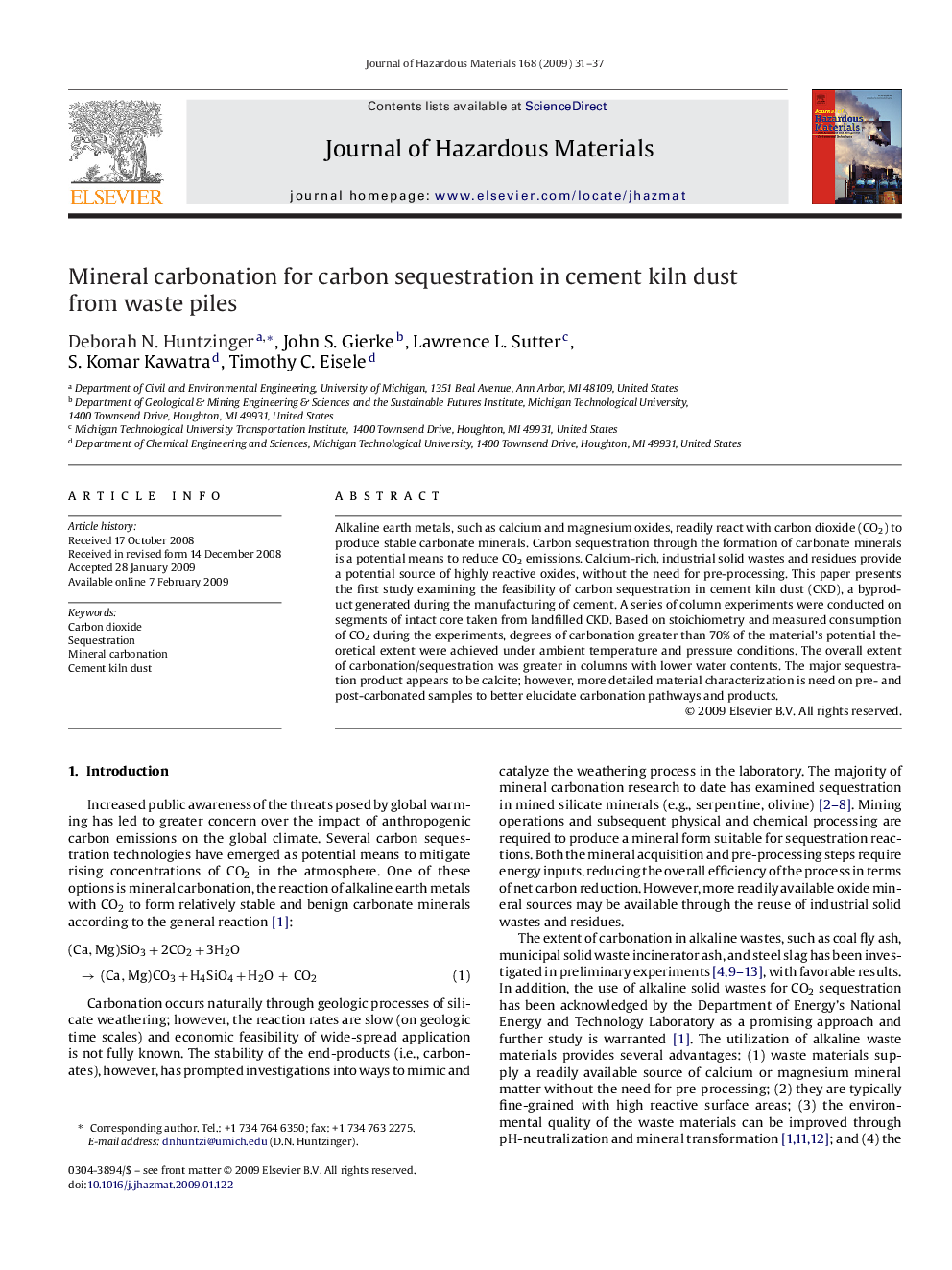| Article ID | Journal | Published Year | Pages | File Type |
|---|---|---|---|---|
| 581303 | Journal of Hazardous Materials | 2009 | 7 Pages |
Alkaline earth metals, such as calcium and magnesium oxides, readily react with carbon dioxide (CO2) to produce stable carbonate minerals. Carbon sequestration through the formation of carbonate minerals is a potential means to reduce CO2 emissions. Calcium-rich, industrial solid wastes and residues provide a potential source of highly reactive oxides, without the need for pre-processing. This paper presents the first study examining the feasibility of carbon sequestration in cement kiln dust (CKD), a byproduct generated during the manufacturing of cement. A series of column experiments were conducted on segments of intact core taken from landfilled CKD. Based on stoichiometry and measured consumption of CO2 during the experiments, degrees of carbonation greater than 70% of the material's potential theoretical extent were achieved under ambient temperature and pressure conditions. The overall extent of carbonation/sequestration was greater in columns with lower water contents. The major sequestration product appears to be calcite; however, more detailed material characterization is need on pre- and post-carbonated samples to better elucidate carbonation pathways and products.
